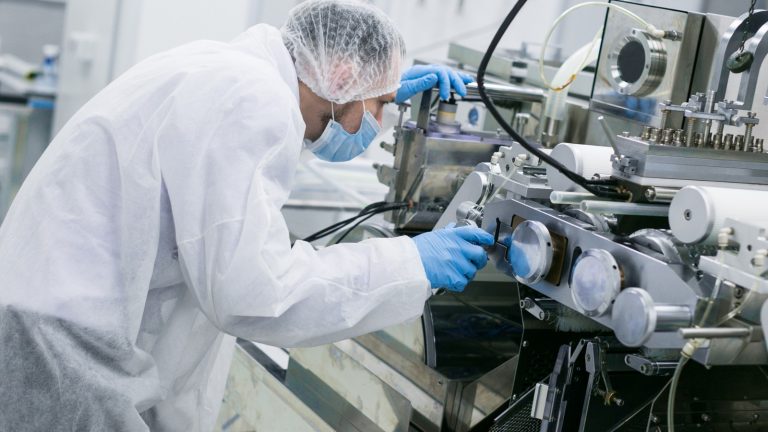Manufacturing is an industry where we witness the necessity of various fixed assets, and maintaining them to the highest quality is a top priority. When thinking about making an investment in a manufacturing company, investors have to evaluate the balance sheet as an important financial document. The assets and liabilities that a business has at any one moment are all indicated on its balance sheet, and fixed assets receive a good amount of attention on this balance sheet. This is where the importance of a ‘Total Investment System’ enters the play as a ‘must-have’ technology.
This article will help you understand the importance of employing a Total Investment System in the manufacturing industry in Singapore to back up the initiatives they take towards fixed asset funding.
Exploring the Total Investment System

A Total Investment System has gained popularity as a comprehensive financial approach employed by businesses, particularly in manufacturing, to strategically manage and optimise their investments in fixed assets.
This includes a range of financial strategies and tools to make informed decisions about acquiring, maintaining, upgrading, and disposing of fixed assets.
The system has developed to find the right balance between risk reduction, cost-effectiveness, and the requirement for capital expenditures, as it consists of certain measures to create long-term financial sustainability.
The main objectives of the Total Investment System are maximising asset performance, protecting against unanticipated risks, allocating resources effectively, etc.
A Total Investment System shows some outstanding compatibility with Industry 4.0 capabilities to conduct asset lifecycle analysis, predictive maintenance, capital allocation strategies, energy efficiency improvements, lease or rental options, etc.
The fusion of these capabilities works together to help Singaporean manufacturing businesses make well-informed decisions regarding their fixed asset investments in the end.
Key Ways to Optimise Fixed Asset Funding in Manufacturing through the Total Investment System

Life Cycle Cost Analysis
Manufacturing companies find that a Total Investment System is very helpful in maximising funding for fixed assets because of its life cycle cost analysis feature. It systematically looks into all of the costs associated with manufacturing fixed assets, including those related to purchase, maintenance, utilisation, and disposal. When businesses hold hands with this potent technology, they can obtain the knowledge to make wise investment decisions by carefully evaluating these aspects.
This is an excellent analytical approach that naturally empowers manufacturers to strategically allocate resources. In the meantime, they can minimise operational costs, extend asset life cycles, and enhance overall financial efficiency as well. As this Total Investment System has the ability to scrutinise every aspect of asset management, manufacturing businesses can drive cost savings and long-term profitability through wise decision-making.
Asset Utilisation Tracking
The latter is quite beneficial when it comes to manufacturing asset utilisation tracking. How is this possible? Through the synchronisation of I4.0 technologies, this solution implements real-time monitoring tools to closely monitor asset utilisation and performance within the business. It is important to proceed with the new assets, but on the other hand, it is rather important how it goes with existing assets. This way, businesses gain the ability to make data-driven decisions about their asset allocation and maintenance schedule, and upon that data, they can arrive at any replacement decisions.
This strategy helps manufacturers enhance efficiency and ensure that assets are employed effectively, maintained proactively, and replaced reasonably to accomplish the best.
Predictive Maintenance
This system’s ability to conduct thorough Predictive Maintenance will be quite helpful for manufacturers to optimise fixed asset funding. The beauty of this is that when utilising the robust I4.0 abilities, businesses can proactively identify repair requirements before assets reach their breaking point, which will crack the workflow. As predictive tools are enriched with the capacity to do condition monitoring and spot errors, this is highly advantageous for manufacturers.
It goes without saying that this approach minimises the possibility of unplanned downtime, reduces operational disruptions, and significantly lowers overall maintenance costs.
Capital Allocation Strategy
This serves as a useful feature of the Total Investment System in that it backs up manufacturing companies’ capital allocation in a strategic way. Utilising all the data it has gathered from various sources, the system develops a transparent and well-defined capital allocation strategy that closely aligns with its business objectives. Through this solution, manufacturing companies can prioritise investments based on their potential to enhance production capabilities, reduce operational costs, or improve product quality.
If further explained, this strategic solution ensures that capital investments are made in areas that offer the highest returns, cost efficiencies, and quality enhancements.
Asset Lifecycle Extension
The above-said system proves to be one of the most underrated technological solutions yet the most beneficial ones in the manufacturing arena when it comes to fixed assets. Asset lifecycle extension is what backs up its value to gain this much popularity. If put in another way, manufacturing businesses can significantly extend the useful lifespan of their industrial assets by making smart investments in upgrades, renovations, and technological advancements.
It is visible that this proactive method not only saves you from the need for costly replacements but also maximises the return on investment (ROI) for existing assets.
Energy Efficiency Improvements
The latter offers its fullest support to manufacturing businesses when optimising funding for their fixed assets, as it is empowered by the I4.0 capability to back up energy efficiency improvements. Businesses can drastically lower their energy usage and operating expenses by implementing smart investments in energy-efficient technology and procedures. This strategy reduces resource use and carbon emissions, which improves the environment in addition to saving money.
Another thing it focuses on is helping manufacturers align with potential government incentives and tax benefits, enhancing their financial performance. As Singapore is a country where they put more focus on energy efficiency regulations, this is quite useful in every way.
Lease and Rental Options
Did you know that the Total Investment System can suggest lease and rental opportunities when it is necessary? Why should you invest a huge amount of money in assets when you can easily lease or rent them from a third party? This approach encourages companies to consider leasing or renting specific assets instead of making outright purchases, which is known as capital-intensive.
If you choose to walk on this money-saving path, your manufacturing business can free up valuable capital, making it available for other strategic investments and immediate operational needs.
Risk Mitigation
It is true that you cannot stay away from risks when embarking on an adventurous business journey. Yet, at least you can minimise the possibility of risks. This technological approach involves implementing comprehensive risk management strategies that are specifically designed to provide a shield against unforeseen events, such as equipment failures or shifts in market conditions. Well, what are those strategies? It ranges from insurance policies and mitigating financial losses to continuously planning to ensure business continuity during disruptions, etc.
If your manufacturing company takes pride in embracing I4.0 capacity through this Total Investment System, it helps you proactively address potential vulnerabilities and uncertainties while walking on the path of success.
Cerexio Total Investment System

The Cerexio Total Investment System, powered by Industry 4.0 technology, offers comprehensive financial insight into asset deployment, management, and budgetary needs. It reduces investment risks, enhances infrastructure planning efficiency, and adapts to specific criteria. This system seamlessly integrates with asset degradation models and aids in understanding monetary valuation drops, providing valuable benefits for investors.
Open the Portal of Fixed Asset Opportunities with the Total Investment System

Why do you limit yourself to the same opportunities when you can get out of this regularity and walk towards a new culture of financial benefits? If you are looking into new ways to expand your business faculty, just brace yourself with straightforward technologies such as the Total Investment System. With the right strategies, you can go beyond boundaries for sure.
